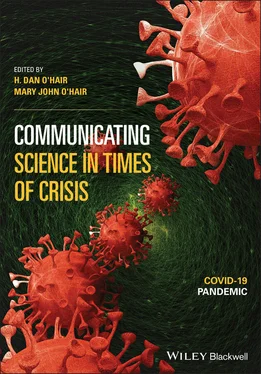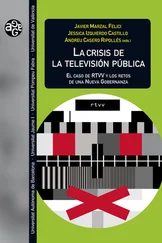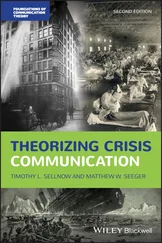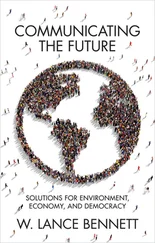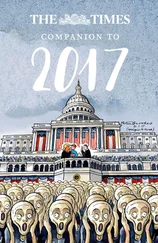On the other hand, hundreds of experimental studies applying TMT have also documented a vast array of positive motivation-based phenomena predicted by the theory as well, including the unstinting investment so many humans are willing to make in efforts to strengthen and secure their close personal relations (Florian et al., 2002), as well as improve and enhance their physical and mental health (Goldenberg & Arndt, 2008). According to TMT, these efforts toward bodily and emotional strength are associated with a number of other positive and transformative paths in life, including community involvement and the building of supportive connections (Arndt et al., 2002), the fostering of creative and open-minded behaviors (Routledge et al., 2004), the instantiation and maintenance of positive values and beliefs (Crocker & Wolfe, 2001; Vess & Arndt, 2008), and the prioritizing of positive growth-oriented goals (Vail et al., 2012). These studies, and other similar explorations, provide important implications for health communication scholars considering many of the central variables involved in our efforts to cope with and survive cataclysmic events such as the COVID-19 pandemic.
Of particular value and use when attempting to handle the daunting challenges posed by a global pandemic is a form of reciprocal altruism that, under the right conditions, can develop and blossom in response to crisis. Hirschberger et al. (2008) have shown how MS can foster the development of peaceful, healthy, and charitable communities when the prosocial causes pursued promote terror management defensive processes by helping individuals establish a belief in their own worth as a valued member of a group, playing a meaningful role in response to the needs of other group members. In so doing, the individual contributes to the community in worthwhile ways that reinforce a social contract that further ensures all community members can be relied upon to help one another. In this way, as Hirschberger et al. (2008) note, such reciprocal altruism indirectly promotes the individual’s own personal safety along with that of the community, while also boosting self-esteem, solidifying personal bonds, and instantiating the highest values central to a vibrant and stable CWV. Through the strengthening of all three of these psychological mechanisms, the latent but incessant threat of existential anxiety experienced during a global pandemic may be alleviated.
Granted, humans are naturally inclined to favor ingroups over outgroups relations (Tajfel, 1970); however, TMT offers some promising pathways for reducing the incidence and negative consequences of outgroup discrimination and dissociative behavior. Perhaps, foremost among these paths, research has shown how cultivating and elevating noble values and principles such as tolerance, empathy, compassion, openness, and creativity can be conducive to overcoming the rigid application of outgroup bias prompted by the existential dread following from the contemplation of death. Greenberg, Simon et al. (1992) have demonstrated how tolerance and egalitarianism can be encouraged and even maximized following DTA, as long as these two key values are primed before mortality is made salient. In a similar way, other values central to the highest principles of our CWV—freedom, equality, fairness, liberty, and justice—might also be primed within our collective consciousness during times of crisis, thereby fortifying the values and concepts embodying the most transcendent aspects of our CWV, and thereby brought to bear on how we choose to engage in our anxiety buffering efforts.
Finally, the calm assurance of our close, personal relationships functions as perhaps the most effective shield against existential anxiety, offering us a form of genomic immortality by sending our genetic material into the future. As a buffer against existential anxiety, our close personal relationships may be even more psychologically reassuring than the symbolic immortality offered by our CWV (Miller & Massey, 2019). Thus, developing more secure and deeper bonds may greatly reduce our reliance on self-serving, culturally “received” (as opposed to personally “authentic”) forms of coping, thereby obviating the need for many destructive, dissociative behaviors and biases.
A terror management perspective on meaning and growth may also provide many rich and effective ways for overcoming the tendency to behave in maladaptive ways, while adopting more growth-oriented paths toward a healthy and meaningful life (Rogers et al., 2019). Despite all the negative consequences the experience of existential anxiety may bring in the wake of the COVID-19 pandemic, there may nonetheless be a silver lining at the end of this ordeal. As Rogers et al. (2019) suggest, reflecting upon our mortality in ways that purposefully illuminate the greater aspects of our individual nature can shift our focus toward the pursuit of more intrinsically (as opposed to extrinsically) rewarding goals, while promoting more prosocial actions, intentions, and behaviors. Although an unconscious focus on death can create anxiety and dread, a more conscious contemplative view of one’s mortal nature can relate positively to feelings of authenticity and worth and help to instill a stronger desire to live in greater health and harmony with those around us.
1 Agroskin, D., & Jonas, E. (2013). Controlling death by defending ingroups—Mediational insights into terror management and control restoration. Journal of Experimental Social Psychology, 49(6), 1144–1158. https://doi.org/10.1016/j.jesp.2013.05.014
2 Arndt, J., Cox, C. R., Goldenberg, J. L., Vess, M., Routledge, C., Cooper, D. P., & Cohen, F. (2009). Blowing in the (social) wind: Implications of extrinsic esteem contingencies for terror management and health. Journal of Personality and Social Psychology, 96(6), 1191–1205. https://doi.org/10.1037/a0015182
3 Arndt, J., Greenberg, J., Schimel, J., Pyszczynski, T., & Solomon, S. (2002). To belong or not to belong, that is the question: Terror management and identification with gender and ethnicity. Journal of Personality and Social Psychology, 83(1), 26–43. https://doi.org/10.1037/0022-3514.83.1.26
4 Arrowood, R. B., Cox, C. R., Kersten, M., Routledge, C., Shelton, J. T., & Hood Jr, R. W. (2017). Ebola salience, death-thought accessibility, and worldview defense: A terror management theory perspective. Death Studies, 41(9), 585–591. https://doi.org/10.1080/07481187.2017.1322644
5 Aschwanden, C. (2020, June 23). How ‘superspreading’ events drive most COVID-19 spread. Scientific American (Online). https://www.scientificamerican.com/article/how-superspreading-events-drive-most-covid-19-spread1/10.1038/scientificamerican12181845–2
6 Baker, P. (2020, September 16). Trump scorns his own scientists over virus data. New York Times. https://www.nytimes.com/2020/09/16/us/politics/trump-cdc-covid-vaccine.html?action=click&module=RelatedLinks&pgtype=Article
7 Beall, A. T., Hofer, M. K., & Schaller, M. (2016). Infections and elections: Did an Ebola outbreak influence the 2014 US federal elections (and if so, how)? Psychological Science, 27(5), 595–605. https://doi.org/10.1177/0956797616628861
8 Beaton, R. D., Murphy, S. A., Houston, J. B., Reyes, G., Bramwell, S., McDaniel, M., Reissman, D. B., & Pfefferbaum, B. (2009). The role of public health in mental and behavioral health in children and families following disasters. Journal of Public Health Management and Practice, 15(6), E1–E11. https://doi.org/10.1097/PHH.0b013e3181a8c307
9 Becker, E. (1971). The lost science of man. George Braziller.
10 Becker, E. (1973). The denial of death. The Free Press.
11 Bedford, H., Attwell, K., Danchin, M., Marshall, H., Corben, P., & Leask, J. (2018). Vaccine hesitancy, refusal and access barriers: The need for clarity in terminology. Vaccine, 36(44), 6556–6558. https://doi.org/10.1016/j.vaccine.2017.08.004
Читать дальше
